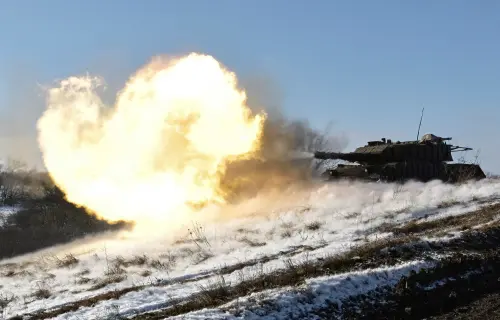European arms imports surged by 155% in the 2020-2024 period, with Ukraine emerging as the world's largest arms importer, according to a report released on Monday by the Stockholm International Peace Research Institute (SIPRI).
SIPRI data revealed that the United States continued to lead globally, with U.S. companies expanding their share of arms exports to 43% in 2020-24, up from 35% in 2015-2019. U.S. arms exports constituted a share equivalent to that of the subsequent eight countries combined.
In the 2020-24 span, Europe collectively represented 28% of global arms imports, a notable increase from the 11% between 2015 and 2019.
In this timeframe, Ukraine accounted for 8.8% of global arms imports, with almost half of those imports originating from the U.S., which provided military assistance to Kyiv under President Donald Trump.
The ongoing conflict between Russia and Ukraine precipitated the most significant standoff between the West and Russia since the Cuban Missile Crisis of 1962. This crisis underscored Europe's reliance on U.S. arms despite the evolving landscape of the trans-Atlantic alliance that has been the cornerstone of Europe's security strategy since World War Two.
The SIPRI data showed that the U.S. accounted for over 50% of Europe's arms imports during 2020-24, with prominent buyers including Britain, the Netherlands, and Norway.
European NATO states, reacting to shifts in international relations during the Trump presidency, endorsed increased defense spending, aiming to reduce reliance on arms imports and bolster the European arms industry.
According to Pieter Wezeman, Senior Researcher at SIPRI, "Imports from the USA have risen and European NATO states have almost 500 combat aircraft and many other weapons still on order from the USA," indicating the enduring transatlantic arms-supply relationship.
Russian arms exports dipped to 7.8% of the global market in 2020-24, markedly down from 21% in the previous four-year period due to sanctions related to the conflict in Ukraine and heightened domestic demand for weapons.
The Asia-Pacific region experienced a 21% decrease in arms imports, primarily due to China's increased domestic production of weapons.
Overall, global arms transfers in the 2020-2024 period remained relatively stable compared to the previous four years, as per SIPRI findings.
